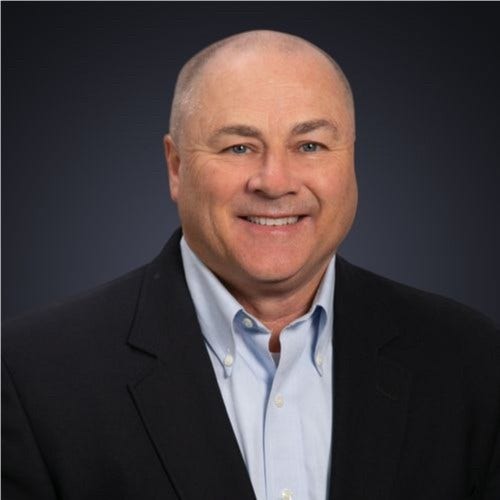EdgeCore Digital Infrastructure Gears Up For Big Growth
“We’re building a team here. We’re in an enviable position in terms of growth opportunity, and that’s exactly where we are heading,” says EdgeCore Digital Infrastructure CEO Lee Kestler. “Fast growth. Execution.”

Lee Kestler
EdgeCore Digital Infrastructure’s new CEO, Lee Kestler, said after the data center provider was acquired last year it has been in expansion mode.
“We’re building a team here. We’re in an enviable position in terms of growth opportunity, and that’s exactly where we are heading,” said Kestler. “Fast growth. Execution.”
EdgeCore was acquired by private equity firm Partners Group last November. In its announcement at the time, Partners Group said it set aside $1.2 billion to pay for EdgeCore as well as a planned data center expansion. Kestler, a data center veteran who previously worked as chief commercial officer for Vantage Data Centers, was brought on this past March to lead the organization into its next phase of growth. He said he has big plans.
“We have a deficit for the number of people that are needed to work in this space,” he told CRN. “We’re growing this company. We intend to hire people at the early stage of their career and take ownership and accountability for their development. EdgeCore, by the time the clock ticks seven or eight years, will be bigger than $10 billion and a leader in all of the things that people care about.”
[RELATED: Nvidia CEO Explains How AI Chips Could Save Future Data Centers Lots Of Money]
EdgeCore is a wholesale data center provider based in Broomfield, Colo. However, Kestler is based in Leesburg, Va.
“I’ve been in this since the early days. I’ve even seen northern Virginia grow from what was farmland to these data centers that exists today. So I have a perspective on the industry that while yes, it’s an enviable market we are in, there’s also a lot of accountability and obligation to do things right.”
EdgeCore currently has 500 megawatts of data center capacity with scalable campuses around the U.S. and in Europe. Kestler talked with CRN about EdgeCore, the data center market and where he sees opportunity with generative AI.

Where are you planning to take EdgeCore here in the next few months?
EdgeCore over the next five to seven years is going to be a data center operator for hyperscale campuses that are 300 megawatts in size and bigger. We’re going to be in five to seven markets in the United States.
We as a steward of the environment and an operator that consumes energy are going to be one of the most environmentally efficient facilities that a customer can lease from.
And we’re going to be good representatives in the communities, and you’ll see us actively involved in safety programs, and then things that we can do for educating folks to bring more people, especially from underserved populations, into the industry. We have a deficit for the number of people that are needed to work in this space.
We’re growing this company. We intend to hire people at the early stage of their career and take ownership and accountability for their development. EdgeCore, by the time the clock ticks seven or eight years, will be bigger than $10 billion and a leader in all of the things that people care about.

What is the opportunity you see with generative AI?
Yes, it’s real. This is not Y2K and I’ve been in this space now for 20 years, at a publicly traded company having to explain to Wall Street analysts how the business can be lumpy because the construction phases of these types of facilities, they take 24 to 30 months.
Buying chips in the supply chain, the H100s from Nvidia, it’s going to take 18 to 24 months to get those out into the field. And folks at Dell, Lenovo, HPE etcetera, they’re all going to use these things for three, four, or five years, and then there’s an afterlife for them.
So yes, these generative AI programs that you’re starting to hear about, it’s absolutely very real. I’ve seen this movie before. It’s almost unfolding in slow motion, but just with bigger numbers. I saw it in the beginning with wholesale data centers where it was just social media companies and enterprise, running their own but needing an outsourced purpose-built facility.
It’s real. It’s going to play out probably over the next 12 to 15 years before you see another major evolution in the technology.
Why is that the timeframe you think it will take?
Because of that supply chain challenge that I just described.
We’re on it right now today with the fury around it, and it’s all very real. The evolution of it’s going to take at least 72 months. Without a doubt, so six years.
Then we have the regular operations for another three, four or five years. They’re going to continue to develop these machine learning applications to filter into these into these infrastructures of compute. And something else will then materialize a new seat, newer things that need to be done.

I’ve talked to some folks who said the large data center markets -- whether its Oregon or Virginia -- are over-indexed or overweighted in CPU infrastructure. To enable all these GenAI applications, it’s going to take robust GPU infrastructure, which is making the secondary markets, which are not as overbuilt, more attractive. How are you looking at this?
There’s not a lift and shift to any technology ever. You’re going to continue to see applications and data center and markets that have a purpose for the facility.
Generative AI is another application that needs a purpose-built facility that takes advantage of energy efficient technologies to allow all of us to do something on these kinds of devices.
The CPU data centers are still going to exist and to be fair, I could take a 10-megawatt data center that’s got 4,000 racks in it and I could run generative AI in there. I’m just only going to have space for 500 racks.
So there’s this evolution now. It’s not a lift and shift. There continues to be an evolution and a maturing. The things we do will always need a data cetner to operate, a network to operate it and the power to enable it. So the CPU data centers are going to be around. Just like there’s a reason for an 1987 Toyota Tercel. They can drive it because they love low cost and they want to drive long distances.
You can get more land options in the Reno area that are more affordable. Networks are traversing through there, going between some of the big cities that are in a part of the country and solution networks.
Chicago is a very tier one market, but it’s been rather slow in the last five to seven years for data center development. Pricing was high, taxes were high, tax incentives were low. You could get land in Columbus, Ohio. So the placement of Columbus between Chicago and Ashburn, Chicago and New York and the Northeast, made it an opportune place for lower cost land. There is an intersection of energy, fiber routes are running through there, there’s major highways, and now it’s one of the bigger markets developing in this country for data centers.
I think you are going to see that in Reno, in the Phoenix area for sure, and that’s why you see us there.
Where can you put something that makes it affordable, and opportunistic to bring it online, because we are not slowing down the use of what we do with these.
You mentioned that data center is enabling better environmental outcomes for energy companies. Can you explain that?
The reason Dominion Energy and other utility companies are able to lean in on carbon mitigation strategies that are not as profitable, that are not as reliable, they’re intermittent, it’s because they can get data center companies as the base load, to give it to give them enough business and revenue to go invest in some of those riskier opportunities like wind and solar.
Wind and solar are not a capable technology for establishing stable base load. You need storage. The sun’s not always shining and the wind isn’t always blowing. And you need new transmission lines, wherever you’re going to build those energy generation sources that have to cross the countryside or areas where people say not in my backyard.
So our business in our industry, in this Virginia area and in other parts of the country, have enabled the utilities to have enough base load to go take risks with those intermittent renewable energy resources where they wouldn’t if it was at the expense of the general population. So we bring them the opportunity to do that because we can bring stable base loads.